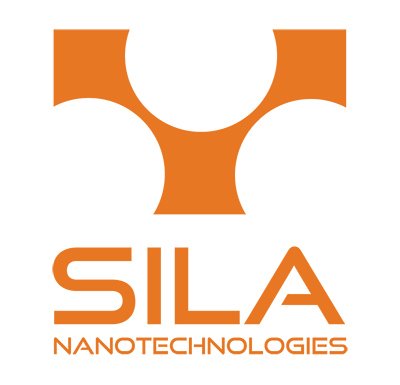SOLID STATE STARTUP FRENZY
As the pace of the electric revolution quickens, there has been a virtual gold rush into this, soon to be vast, electric industry - it's almost all about the battery. Improving battery density, the amount of energy that can be contained in the same volume, is the focus of startups and research. So, what's the next big thing after the lithium-ion cell? Many of these startups focus on new technology known as ‘solid state’. You're going to hear a lot about solid state batteries in the years to come but what are they? As the name implies instead of using liquids or gels for electrolytes (which can form dendrites overtime) solid state batteries use solid electrodes and solid electrolytes. This means the electrons moving from the anode to the cathode don't pass through a liquid medium.
Inside a conventional lithium-ion cathode the particles are made up of lithium containing metal oxide, such as Nickel, Manganese Cobalt oxide, known as NMC. These elements effectively hold the structure of the cathode together when the battery has been fully discharged. When the battery charges, the lithium particles leave the cathode, travel through the liquid or gel electrolyte and enter the anode ready for discharging again. Carbon atoms in the anode temporarily hold on to lithium particles until it's time to be discharged and sent back into the cathode.
Eventually this constant moving back and forth degrades the battery, as I've explained, but in solid state batteries this is very different. In solid-state, there are just two layers instead of three. There is only a positive cathode in a solid-state battery with a ceramic separator to the electric contact. As a solid-state battery charges, the lithium electrons leave the cathode and accumulate in between the ceramic separator and the electrical contact plate. An anode is therefore formed in between this gap and is pure metallic lithium. This allows the energy to be contained in a much smaller volume, therefore increasing the energy density.
Solid State Battery Process
Solid state lithium batteries offer the potential for ultra-fast charging and increased safety by reducing fire risk. With more efficient thermal control, less work is required for battery management systems, cooling and heating components making the battery pack even simpler and more cost effective.
Solid state batteries are to electric cars what nuclear fusion will be to energy production, transformational. Like nuclear fusion, solid state theory is not new, indeed Michael Faraday made early discoveries in the mid-1800s on which today’s batteries are based. The solid electrolyte in these batteries can even be made from glass. Solid state doesn't just deliver higher density, because it's a more efficient use of volume it means batteries can be smaller and therefore a lot lighter, further improving the efficiency and range of EVs.
Some estimates predict that solid state can at least double density and range, and because the formation of dendrites is controlled, the longevity of the battery could also increase by a factor of two or more. Increasing the number of lifetime charging cycles is equally important to ensure longevity.
Achieving a range greater than an internal combustion car, on a battery that effectively lasts for decades and at a price that's affordable to the masses would transform the electric car revolution completely. Internal combustion cars by comparison would look like ancient technology and their likely phase out would be rapid.
Different automakers have made differing claims about just how close their solid-state technology is. For example, luxury automaker Bentley predicts its range of electric cars will be solid state driven in the near future, while Volkswagen believes this technology is at least a decade away. In Japan, electric laggard Toyota has formed a consortium, named LIBTEC, with Honda and Nissan, to advance solid state production. Tesla's battery supplier, Panasonic, is working on solid state technology and predicts the technology will be available in electric cars by the end of the 2020s decade.
SILA Nano Technologies Logo
As ever, it's mostly not about the incumbent legacy manufacturers, startups are driving a virtual feeding frenzy on solid state technology. One startup gained international media attention in 2020 with their announcement of a breakthrough in solid state battery technology capable of charging a standard EV to 80% in just 15 minutes or less. Quantum Scape’s announcement drew some sceptics, but the company has defended its claims, slating 2024 for full production. Volkswagen, along with Bill Gates, has invested heavily in the San Jose-based start-up.
Sila Nanotechnologies, has raised $590 million in 2021 and has plans to build a battery plant with triple the capacity of Tesla’s Nevada Gigafactory and develop a commercial grade silicon anode, something researchers have been working on for years.
Going one step further, Israeli battery company StoreDot, claimed breakthroughs for extreme fast charging battery (XFC) technology in early 2021. StoreDot’s technology is based on silicon nano materials replacing graphite to control battery swelling as ions fill the anode. The company claims the technology will deliver a full EV charge in just five minutes
A host of other startups are working on similar technology to replace graphite in the battery through materials science research, with silicon looking like the potential winner material. Relative to lithium and cobalt, silicon is abundant and one of the easiest to mine minerals on Earth.
Mature companies like Samsung have developed a solid-state prototype using silver carbon to create the anode and claims the battery will be capable of delivering an EV range of 800 kilometers (500 miles) on a single charge.
While Toyota has been very slow to come to the electric vehicle party, they do have over 1,000 patents registered on solid state battery technology. Toyota have claimed that their batteries will still operate at 90% capacity even after 30 years and be fully chargeable in just 10 minutes. Despite their hybrid focus, Toyota has been working on solid state batteries for almost 10 years.
BMW formed a partnership with Solid Power to develop solid state batteries for cars and while Dyson's electric car never made it into production, they have also acquired solid state battery startups like Sakti3. Hyundai are working with Ioniq Materials in a similar pursuit.
It’s not just startups and the car industry, tech behemoth IBM is also researching solid state. The science of quantum theory analyses particles at a subatomic level to understand their interaction with each other. IBM, together with German car maker Daimler, is researching, at the atomic level, the chemical interactions between elements in a battery to better understand and improve capacity, charging and discharging.
National governments are also getting in on the solid-state race. Japan and China have gone head-to-head in funding research and development. Although solid state batteries are expensive to manufacture today, it is expected that with economies of scale, the price will drop rapidly.
Solid state batteries are still not in use in consumer electronics or any true commercial form. Getting the electrolyte material correct, to maximize ion transfer efficiency, is part of the continuing research and development. However, with promised higher density, lighter weight, longer range, higher safety and a longer lasting life, solid state batteries offer game changing potential not just for cars, but energy storage and future consumer electronics. Your smartphone battery, for example, could last at least 10 years.
If all goes to plan, and the technology becomes commercial, the 2030s decade will witness a revolution in mobility, electronics and energy storage, hopefully generated mostly from renewable energy sources.
Before this can happen, production techniques need to significantly develop, for example manufacturing solid state battery requires an extremely dry environment to prevent any moisture from entering the structure of the battery. On top of that, supply chains for mass production will require multiple different metals and elements to be available on a massively increased scale. This brings us to the next big part of the battery revolution, supplying the materials. Just like oil these materials must be taken out of the ground and I will cover that in my next blog.




